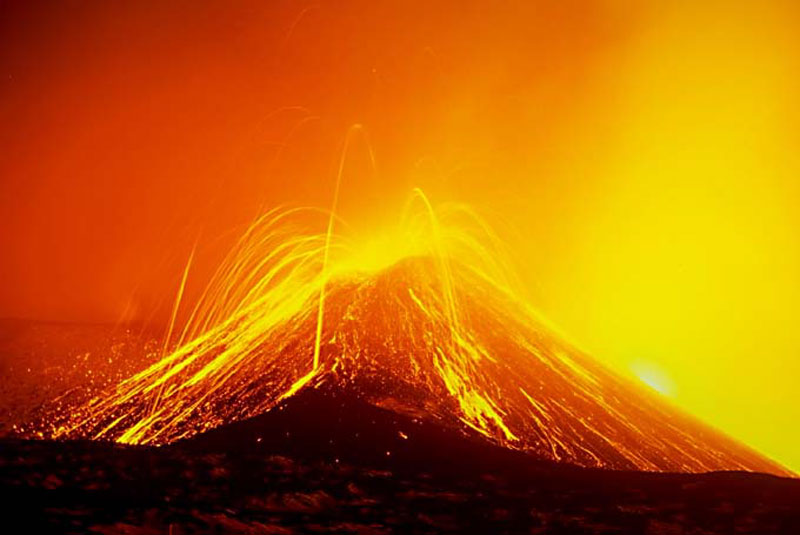
|
Credit & Copyright: Marco Fulle
(Stromboli online)
Explanation:
Mt. Etna
erupted spectacularly in 2001 June.
Pictured above, the
volcano
was photographed expelling bubbles of hot magma,
some of which measured over one meter across.
One reason planetary geologists study Earth's
Mt. Etna is because of its
likely similarity to
volcanoes on
Mars.
Mt. Etna, a basalt volcano, is composed of material similar to Mars,
and produces similar
lava channels.
Located in Sicily,
Italy,
Mt. Etna is not only one of the
most active
volcanoes on Earth, it is one of the
largest,
measuring over 50 kilometers at its base and rising
nearly 3 kilometers high.
News:
Annular solar eclipse visible tomorrow from Europe and Africa
|
January February March April May June July August September October November December |
| |||||||||||||||||||||||||||||||||||||||||||||||||||||||
NASA Web Site Statements, Warnings, and Disclaimers
NASA Official: Jay Norris. Specific rights apply.
A service of: LHEA at NASA / GSFC
& Michigan Tech. U.
Based on Astronomy Picture
Of the Day
Publications with keywords: Mt. Etna - eruption
Publications with words: Mt. Etna - eruption
See also:
